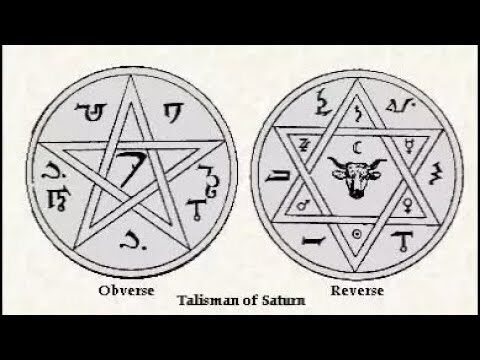The Mystique of the Star of Remphan
The Star of Remphan, an ancient symbol with deep historical roots, has intrigued scholars and enthusiasts alike for centuries. Often associated with celestial worship and mysticism, this emblem has sparked debates surrounding its origins and meanings within various cultures. As we delve into its significance, we uncover a tapestry of religious traditions, archaeological discoveries, and the enduring fascination it holds in contemporary society. Join us on a journey to explore the enigmatic legacy of the Star of Remphan and its impact on our understanding of spirituality and history.
What does the star of Remphan represent in the Bible?
The star of Remphan symbolizes the idolatrous tendencies that plagued the Israelites throughout their history, reflecting their susceptibility to the allure of surrounding pagan cultures. This celestial emblem is often associated with periods of rebellion against God, during which the Israelites turned to idol worship, straying from their faith. Such practices serve as a reminder of the challenges faced in maintaining spiritual integrity amidst external influences, highlighting the ongoing struggle between devotion and distraction.
What is the meaning of Remphan in the Bible?
In biblical texts, Remphan is associated with the worship of celestial bodies, specifically the star-god Saturn or Moloch. This name is notably referenced in the Acts of the Apostles, where it appears in the narrative by Luke, highlighting its significance in the context of ancient idol worship.
The mention of Remphan serves as a reminder of the challenges faced by early believers in navigating a world rife with false deities and the temptation to stray from true faith. Through this reference, the scriptures underscore the importance of devotion to God, contrasting the worship of pagan idols with the call to spiritual fidelity and righteousness.
What does the Star of David represent?
The Star of David, often recognized as a prominent emblem of Judaism, carries significant historical and cultural weight. Known in Hebrew as the Magen David, or “shield of David,” it has become a symbol of Jewish identity and pride. Its design features two interlocking equilateral triangles, which create a striking six-pointed star that resonates with meaning and tradition.
This geometric shape is not only visually captivating but also deeply symbolic. The overlapping triangles represent the connection between the divine and the earthly, reflecting the dual nature of existence. The central hexagon formed by the triangles serves as a reminder of harmony and balance, embodying the unity of various elements within the Jewish faith and community.
Throughout history, the Star of David has transcended its religious roots, evolving into a broader symbol of resilience and hope for many. It adorns synagogues, jewelry, and national symbols, representing both a rich heritage and a commitment to the future. As a beacon of identity, the Star of David continues to inspire and unify people across the globe.
Unveiling Ancient Secrets of the Celestial Icon
Throughout history, celestial icons have served as powerful symbols, bridging the gap between humanity and the cosmos. These ancient artifacts, often intricately designed, reflect the beliefs and aspirations of civilizations that sought to understand their place in the universe. Each icon tells a story, revealing insights into the astronomical knowledge of its time, as well as the cultural values that shaped its creation. By studying these celestial symbols, we not only gain a deeper appreciation for the artistry involved but also uncover the profound connections our ancestors forged with the heavens.
As modern scholars delve into the mysteries of these ancient treasures, new revelations continue to emerge, offering a fresh perspective on our shared history. The meticulous craftsmanship and the symbolic meanings embedded within these icons invite us to explore the spiritual and scientific inquiries of past societies. This ongoing exploration not only enriches our understanding of ancient cultures but also inspires contemporary reflections on our own relationship with the universe. In unveiling these secrets, we reconnect with the timeless quest for knowledge that has always driven human curiosity.
Journey Through the Legends of Remphan
In the heart of ancient tales lies the enigmatic figure of Remphan, a symbol steeped in mystery and reverence. Legends speak of a celestial entity, often associated with the night sky, guiding wanderers through the darkness with the light of forgotten wisdom. As we embark on this journey, we unearth the stories that bind cultures and generations, weaving a rich tapestry of belief and tradition. From the flickering flames of ancient altars to the whispered prayers of devoted followers, the essence of Remphan transcends time, inviting us to explore the depths of our own spirituality.
As we delve deeper into the legends, we encounter narratives that intertwine the divine and the mortal, showcasing how Remphan has inspired countless seekers throughout history. These tales not only illuminate the past but also ignite a yearning for connection in the modern world. Through art, literature, and ritual, the spirit of Remphan continues to resonate, reminding us of the shared human experience that unites us across cultures and eras. Join us as we navigate this extraordinary odyssey, unveiling the timeless allure of Remphan and the profound impact it has on the human soul.
The Cosmic Legacy Behind the Star
Throughout history, stars have captivated human imagination, serving as beacons of wonder and exploration. Each twinkle in the night sky tells a story, whispering secrets of ancient civilizations that gazed upward, seeking meaning in their celestial surroundings. This connection to the cosmos has inspired countless myths and legends, intertwining our existence with the stars, as we ponder our place in the universe.
The birth and death of a star play a critical role in the cosmic legacy that shapes our world. Stars are born from clouds of gas and dust, igniting nuclear fusion that fuels their brilliance. Over millions of years, they evolve, enriching the universe with heavy elements through supernova explosions. These elements, like carbon and oxygen, are essential for life, forging a direct link between the cosmos and our very beings, reminding us that we are made of stardust.
As we delve deeper into the mysteries of the universe, our understanding of stars expands, revealing not just their scientific significance but also their profound impact on culture and art. From poetry to paintings, the imagery of stars has inspired creativity and reflection, bridging the gap between science and human experience. By recognizing the cosmic legacy behind the stars, we celebrate not only their beauty but also the interconnectedness of all life, urging us to continue exploring the vastness of space and our role within it.
The star of Remphan remains a compelling symbol, intertwining ancient beliefs with modern interpretations. Its enigmatic presence challenges us to explore the depths of our cultural narratives while prompting reflection on the intersection of faith, identity, and the cosmos. As we continue to unravel its mysteries, the star serves as a reminder of the enduring power of symbolism in shaping our understanding of the universe and our place within it.







